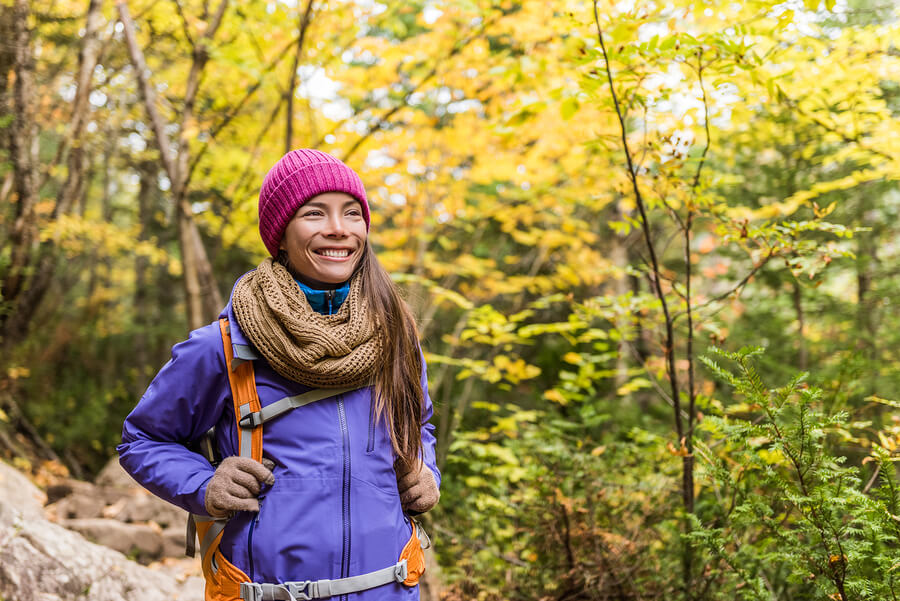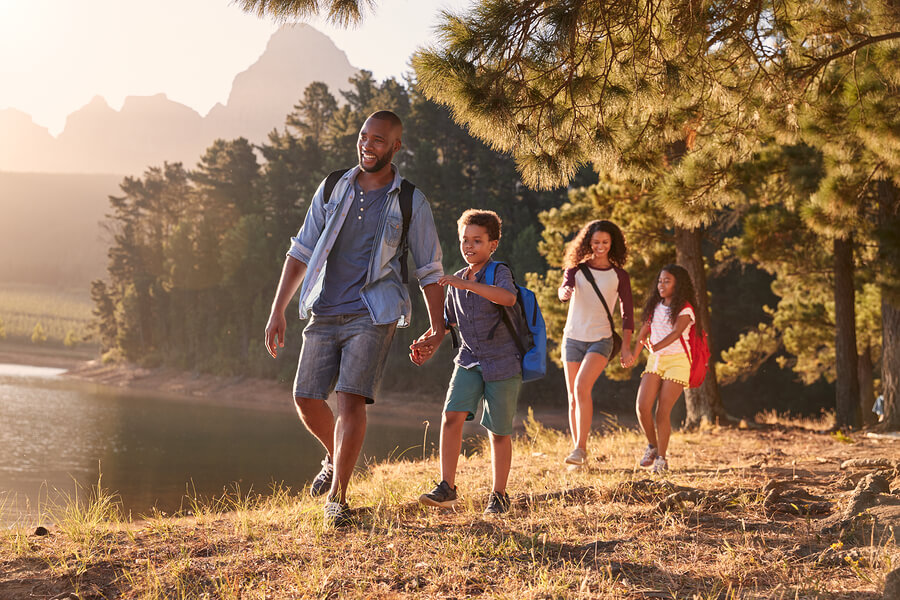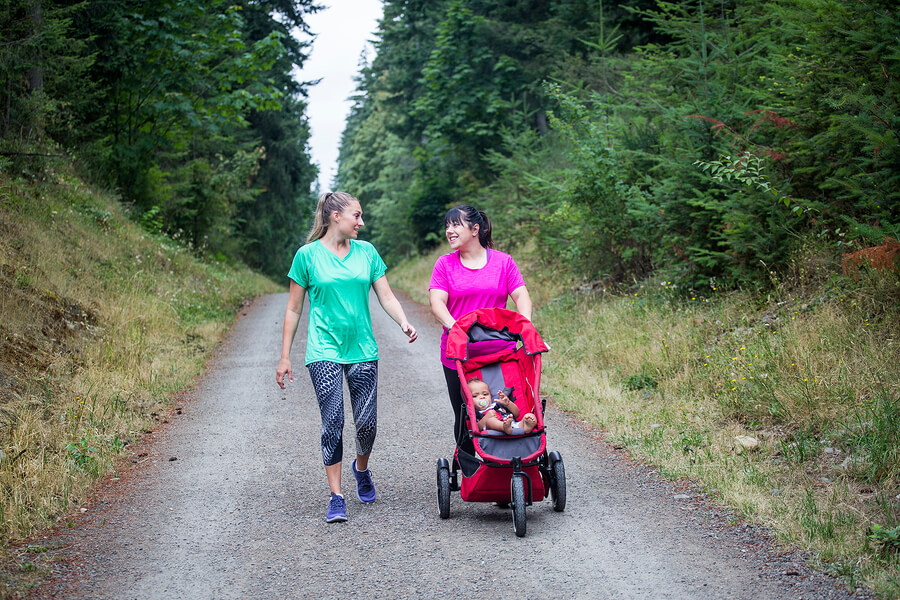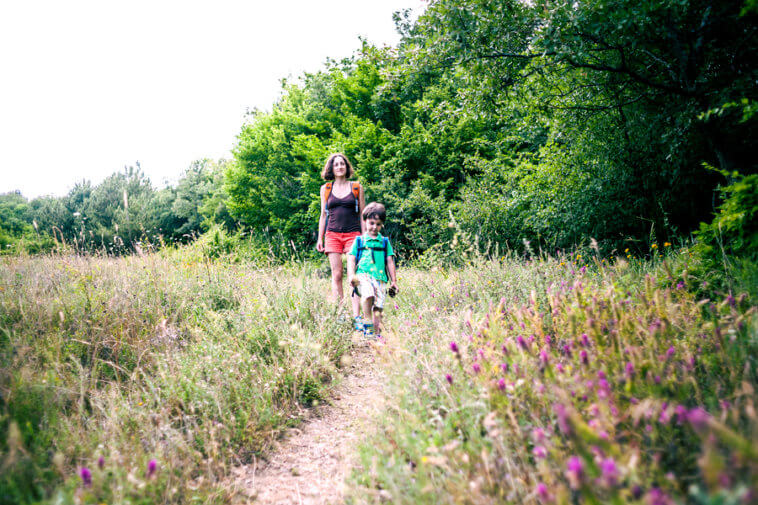Walking is the simplest of all exercises. It is also one of the healthiest and safest workouts. One of the best ways to enjoy walking is to hit one of your local walking trails.
Many cities and towns have long winding walking trails. If there are no dedicated walking trails near your home or office, you can always hit the road and take to the pavements as far and long as you want. While walking is a basic movement and does not really fall into any distinct category of exercise or fitness routine, long distance walks have loads of health benefits. For some people, running may present too many risks. Walking doesn't have the same potential issues such as shin splints, plantar fasciitis and tendinitis among others.

Is Hiking a Good Way to Lose Weight?
Hiking is usually more vigorous than walking but both are useful exercises if you wish to lose weight. Walking and hiking can burn more calories than what you will lose while sitting and standing at one place. You will burn more calories while hiking as it is more laborious. Walking too can be made challenging if you increase the distance or reduce the time. Walking at a speed of up to three miles per hour will burn fewer calories than when you clock a speed of five miles an hour. Let's take a quick look at how many calories you can burn at varying speeds and distances.
The three major factors that determine how much calories you shall burn are your
- Body weight
- Distance traveled
- Speed of walking
In case of hiking, there will be a fourth factor and that would be the obstacles or challenges of the trail. Many hiking trails have considerable elevation, the terrain may not be a flat and you might have to deal with changing altitudes. There may also be some rather odd or daunting climbs.
Hiking will burn more calories but the entire distance will be a key. For the most part, people don't hike every single day. Hiking trails are not always long enough to help people burn over a thousand calories. Many hikes are just a mile or two miles long. No matter the hurdles, unless it is one steep ascent or akin to rock climbing, a mile or two will only burn a few hundred calories and that can be influenced by the pace you maintain. Hiking a mile or two in four hours with plenty of stops and snacking may be fun, but won't burn as many calories.
Walking trails allow walkers to cover as many miles as they like with ease. One can cover the entire trail and repeat the path to clock as many miles as desired. It is not uncommon for some people to walk five miles every morning or evening. The beauty of walking trails is that you can plan your daily ritual and go when you find it most convenient. However, many hiking trails are often closed at sunset or just before so keep that in mind.

Top 9 Reasons Walking Trails Are Good for Mind & Body
- Walking trails are good for mind and body. The first effect on the mind is quite obvious. You get to venture beyond your home or office. You get to hit the walking trails, which are mostly outdoors. It's calming to take in a pleasant view of a park with trees, fellow walkers, a skyline or a cliff, a pond or a lake. Enjoy stretches of grass if not meadows, and the ambient sound of nature. Even just being out in fresh air will definitely give you a much deserved break. Limiting yourself to the confines of four walls can be self inhibiting.
- Walking trails are great stress busters. They can alleviate anxiety. They can even help reduce symptoms of depression. It is not necessary to have a companion along the walking trails. Just enjoying some quiet, alone time with nature is calming. Being amidst fellow walkers and joggers can also be quite refreshing. Around the world there are people who become friends with their fellow walkers and joggers.
- Let us now talk about the physiological effects. One of the most significant benefits of walking trails is its impact on the heart. As you walk, breathe in the fresh air, improve circulation and flex various muscles & joints in your body, your heart finds it easier to pump and circulate blood throughout your body. You are basically facilitating an enhanced heartbeat. Regular walkers will be less vulnerable to different types of heart disease.
- Walking trails have a combo effect on blood pressure and sugar. Diabetics are always advised to hit the walking trails. Those who have chronic hypertension and high blood pressure are recommended to walk every day. Walking also helps to counter stress and anxiety. Coupled with regulation of blood glucose levels and blood pressure, it is the simplest way to manage diabetes and hypertension.

- Walking trails will help your bones. Your bones and joints are bearing the natural weight of your body as you walk. When you are sitting or even standing, some joints and bones are compelled to endure more weight than others. Walking enables all the joints in your body that are supposed to bear a certain weight to endure just the right pressure. This increases bone density. This also flexes the joints and keeps them healthier. You are unlikely to experience joint aches and weakening bones if you are a regular at the walking trails.
- Walking trails will improve musculoskeletal strength. You will not develop bulkier muscles due to walking but you will increase their mass while burning away the fat. Your muscles will have greater strength and endurance. Maybe not enough to lift a boulder but certainly to support your bodyweight and a vast range of motion. Walking targets various muscles, from the hamstrings and the quadriceps to the hips down to the calves. You will also have greater strength in the gluteal muscles, the three forming your buttocks.
- Walking trails will improve your core strength. You will need to maintain an upright posture while walking. There are people who slouch while walking. You cannot remain slouched when you have to walk five miles or ten miles. In due course of time even a slouching person will resort to the natural upright posture. This corrects and also strengthens the core muscles. You will feel the difference after you hit the walking trails for a few days. Your belly will feel and be flatter. You will experience greater strength in your abs.
- Walking trails enable walkers to improve their postural balance. This is not as much of a problem among the youth as it is for the ageing. People as young as in their early thirties often end up with poor balance due to their sedentary lifestyles. The younger generations are getting more conscious about their lifestyle choices. Regardless of age, walking will improve balance. This will reflect in postures while sitting, standing and even sleeping.
- Walking trails are the easiest way to burn calories and lose weight. Even if you do not intend to lose a lot of weight, you can use walking to easily maintain your weight. Every exercise does not have to be about washboard abs or losing twenty pounds in a fortnight. Some exercises are more about a regular maintenance of the most complicated machine on the planet, the human body.

What is the Difference Between Hiking and Walking?
Hiking is a form of walking but not on a flat and even surface. Walking trails are usually paved or otherwise smooth paths in:
- Parks
- Along a bay, beach, lake
- Set in the backdrop of a hill or mountain
- Winding pathway through a forest
They may also be found in other settings with varying landscapes but they are usually man made. Walking trails can be natural but there is some effort to regulate the route. Hiking usually is in a natural landscape on a terrain as it is. Hiking trails usually have varying elevation. There may be rocks, boulders, cliffs, valleys, sharp ascents and descents among other natural elements.

Best Things to Bring on Walking Trails
If you're going to be out walking for quite a few miles, there are several things you should bring to be prepared. Most importantly, you should wear a great pair of walking shoes or hiking boots. Test them out and wear them for a few days before hitting the trails. This way, you'll wear them in and hopefully avoid blisters out on the walking trail. If you're going on a long walk, wear a pack, either on your back or across the body. You should have:
- Bottle of water
- Healthy snacks (such as fruit, trail mix, nutrition bars)
- Light jacket
- First aid kit
- Flashlight
Remember to wear a hat and slather on the SPF before you head out!

Is Hiking a Cardio or Strength Exercise?
Hiking is a cardio exercise, just like walking. However, it can also becomes a strength exercise when you hit the challenging trails, especially those that involve steep climbs.
Do you have any favorite walking trails or tips to share? Let us know how you explore the beaten path and beyond down below!




Comments
Loading…